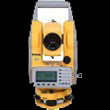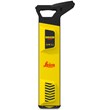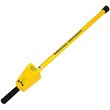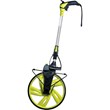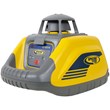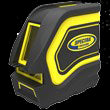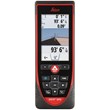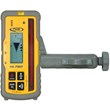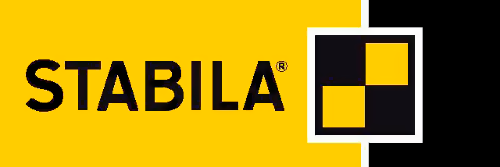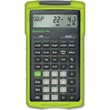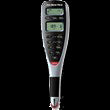
Complete Guide to Tree and Pole Pruners
For trees to look their best and stay healthy, they require occasional pruning. This process removes dead or damaged branches and thins out thick limbs that may block out sunlight.
When caring for trees and landscaping, pole pruners are a necessary tool. They can make your job much more accessible and leave you with well-manicured trees and hedges.
However, not all pole and tree pruners are created equal. There are several factors to keep in mind when choosing the suitable pruner for you. These include length, weight, cost, portability, as well as manual versus gas-powered pruners.
The following guide will help you to find the perfect pruner for you.
What Is a Pole Pruner and What Is It Made Of?
Let’s start with a basic description of a pole pruner. A pole pruner is a tool used to cut down limbs and branches from a tree. The pole allows you to reach high units while you remain safely on the ground.
The poles of tree pruners are usually fiberglass, though some older models are wood. The fiberglass makes the poles sturdy and lightweight and makes for easy use.
Depending on the type of pruner you choose, the blade is made of different materials. Manual tree pruners end with a pruning saw that can be manipulated manually. There are also gas-powered saws that work like miniature chainsaws.
Most pole pruners can reach up to eighteen feet in length. Depending on the type of pruner you choose, it will either be telescopic or include multiple pieces that can connect to extend the pole to the height you need.
What Jobs Are Pole Pruners Used For?
Pole pruners are ideal for any job that requires you to cut down branches and limbs from a tree. Tree limbs are not easy to reach, so you will need something to help you get the hard-to-reach areas.
Pole pruners provide the reach needed to cut branches safely. Using power tools or a saw from a ladder can be dangerous, as the ladder can be flimsy or uneven. Falling from a ladder with a chainsaw in your hand can be a hazardous situation.
A pole pruner eliminates this problem by giving you the extended reach to get those branches from the safety of the ground. You will need to pay attention to the limbs to ensure they do not fall on you or anyone else, but it is relatively safer.
For high branches, it is better to call a professional as they will have specialized equipment. Your pole pruner will be ideal for smaller jobs that you can do yourself.
Types Of Pole Pruners
When it comes to pole pruners, there are four main types. Each type of pruner has its advantages and disadvantages.
You will want to choose the suitable pole pruner for your needs and your budget.
Manual Tree Pruners
These types of pruners are perfect for beginners or smaller branches. These pruners are lightweight and easy to use to get small jobs done. They are perfect for small trees or larger, tall shrubs.
Place the blade of the trimmer over the branch so that it hangs over it. Then, engage the cable on the pole, which will scissor the edge in a cutting motion. When done, release the mechanism, and the blade will return to its original position.
The traditional pole pruner includes a curved 12-16 inch pruning blade attached to a pole. These pruners are ideal for a little thicker limb and can cut through most limbs up to 8 inches in diameter.
These trimmers do not have a cutting mechanism, so you use these much like a traditional sawing motion. It can be a bit of a workout, but it will get the job done.
Most traditional pole pruners come in sets of poles that either telescope out or attach. You will also have two interchangeable blades, either as a saw or a hooked pruner with a rope mechanism. Most models also include a hook at the base to help remove and pull down cut branches.
Electric Pole Pruner
Electric pole pruners provide a little more power and can make cutting branches and limbs a little easier. Electric pruners can either be corded or cordless battery-powered trimmers.
While both types will give you more power than a manual trimmer, each also has advantages and disadvantages. A corded pruner is restricted to the length of an electrical cord and will require the use of an extension cord to be fully effective.
Battery-powered electric pole pruners have more power than their corded counterparts. Most battery power ranges from 40 to 80 volts; more volts equal more power. Battery-powered pole pruners tend to be more expensive than corded pruners.
An electric pole trimmer is a combination of a traditional pole trimmer and an eclectic hedge trimmer. There are corded and cordless models available for your needs.
This trimmer works much like a traditional hedge trimmer but gives you the added reach of a pole trimmer. They are ideal for trimming tall hedges without a ladder but are not suitable for tree trimming.
While electric pruners have more power and can handle bigger jobs than manual pruners, there are limits. They will not have the cutting power that a gas-powered model has. Still, they are suitable for medium-sized jobs.
Gas Powered Pruners
Like the eclectic pole trimmers, these pruners use a mini-chainsaw as the cutting mechanism. They pack a lot more power and are a preferred choice for many professional tree trimmers.
These pruners are perfect for reaching hard-to-reach limbs and branches, as well as cutting thicker limbs that traditional pruners cannot handle.
These pruners are also a bit heavier but are suitable for heavy-duty jobs. If you are doing light maintenance, these may not be for you. However, if you live in wooded areas, then this is an indispensable tool.
Gas-powered trimmers also require regular maintenance. You will need to do frequent oil changes and fuel replacements to keep them running correctly.
What to Look for In a Tree Pruner
When choosing your tree pruner, consider several factors when selecting the suitable pole tree pruner for you.
The length of the pole and how it extends can be significant when thinking about what type of jobs you are doing and the size of the blade. Also, it would help if you thought of the weight and cost of the device. If you live in an area with neighbors, noise can be a consideration as well. Finally, it would help if you thought about portability.
Let’s look at each of these factors and things to think about when choosing your pole tree pruner.
Pole Length
Depending on your needs, the length of the pole can be an essential factor. Think about the height of the branches you will be trimming. You will need a pole pruner with a higher extension range than other pole trimmers if you have high branches.
When choosing your pole trimmer, you will want to pay attention to the “working height” on the manufacturing packaging. This is the actual length of the pole as well as considering arm length. Most manufacturers factor 2-3 feet for arm length.
Pole trimmers will max out at about 10-12 feet, as anything longer than that can become challenging to control. Having a trimmer with a telescoping pole makes it easy to adjust the length of the pole for whatever task you are performing.
Blade Length
The length of the blade of your pole pruner is essential when considering what jobs you will be using the pruner. If you are cutting thicker limbs, you will want a pole pruner with a longer blade, while smaller jobs may need a small blade to get the job done.
A longer blade will also allow you to cut more per stroke. Therefore, a longer blade also will make the job quicker.
Most pole pruner blades will fall between 12 and 20 inches. On average, a 16-inch knife will be effective in getting the job done in most cases.
Weight
If you can’t handle the weight of your tree pruner, then you will have difficulty in getting the job done. You will need a certain amount of upper body strength to use your arms and shoulders to get the work done.
Manual tree trimmers will be much lighter. The poles are made of lightweight fiberglass, and the sturdy blades are also very lightweight. This is something to keep in mind, as you will be using manual energy in operating this type of tree pruner.
An eclectic pole pruner can allow you to get work done quicker than their manual counterparts. However, they will weigh a bit more due to their components. The electrical components in the pole and the motorized head and end of the pole will also add weight. Cordless electric pole pruners will also have more weight in the back end due to the battery pack.
The most powerful but also the heaviest type of pole pruner are the gas-powered options. While they will not be unyielding, the gas tanks and more heavy-duty components will add to the unit.
You will often be able to find the weight on the unit packaging. Manual models will be the most lightweight options but if you need more power, make sure that it will not be a model that is too heavy for you.
Cost
Another factor to consider is the cost of the trimmer. While manual models will be cheaper, powered models will cost more. The most expensive models will often be the gas-operated models.
If you have simple light maintenance, it may be worth it to buy a manual tree pruner. If you want something with a little more power, eclectic options may be best. Keep in mind that battery-operated pruners are more expensive than corded models.
If you have a lot of tree maintenance or thicker branches, it may be worth your money to invest in a gas-powered pruner. While they are more expensive and require extra care, they can save you time and energy in the long run.
Keep in mind what your needs are when choosing your pole pruner. If you use your pruner a lot and for significant projects, investing more money in your pruner may be worth it. However, if you need one for light maintenance, a cheaper pruner may be more to your liking.
Noise Factor
Depending on your location and where you will be doing your tree trimming, noise may be a factor. You may not want to disturb your neighbors or not want to make too much noise.
If you are worried about noise, a manual tree pruner is your best option. The only noise is the blade as it cuts through the tree limbs.
Electric tree pruners will be somewhat noisier. Due to the motor, there will be some noise generated. The more power that the eclectic trimmer generates, the more noise it will produce. If you need a trimmer with some capacity but won’t make too much noise, these are the best options.
For heavier projects, gas-powered pruners are your best bet. However, with that high power, there is more noise. While these are ideal for commercial and more extensive projects, you will want to keep this in mind. Or at least schedule your work where there is less chance of disturbing your neighbors.
Portability
A final factor to consider is the portability of your tree pruner. If you are going to be transporting your pole pruner from place to place, you will want it to be something you can easily transport.
If you are using a telescopic pruner, pay attention to the lowest length setting it has. Some models also come in sections that can be attached and detached which can make them more portable.
Choose The Right Pole Pruner for You
Everyone’s tree maintenance needs are different. You may have a few trees and hedges that need some regular sprucing up from time to time. Or you may have more heavy-duty projects that require a lot of work.
Following this guide, you will be able to find the perfect pole pruner for your needs and budget. Pay attention to the length of the pole and blade, the device’s weight, the cost, how loud it might be, and how easily you can get it from place to place.
With a suitable pole tree pruner, you will have your yard looking great all year long.

